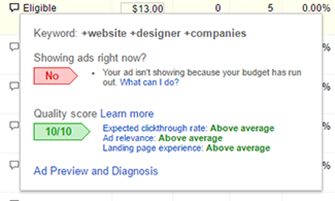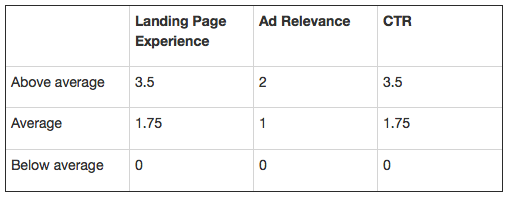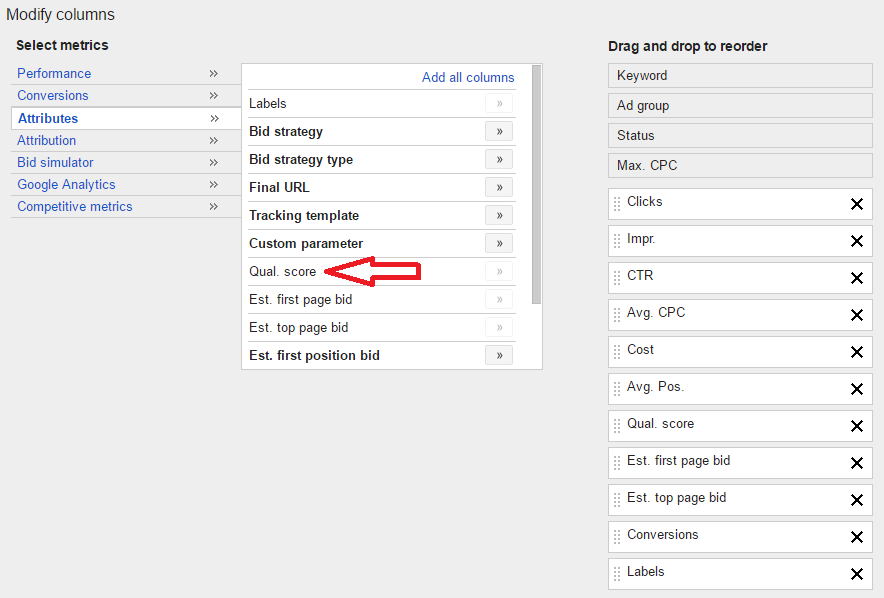Google Adwords is undoubtedly a great way to maximize Return on Investment (ROI) online. Advertisers and marketers do not have to waste money by throwing advertisements into thin air in the hopes they reach a relevant customer. Customers don’t have to deal with the frustration of seeing an ad they are completely uninterested in. Google Adwords works for everyone–marketer and customer alike. But how do you make the most of your Google Adwords performance?
Having a high Ad rank ultimately determines how, where, and if your ad will be seen. Ad rank is calculated by bid amount, Quality Score, and extensions and other ad formats. Of course, the bid is something pretty straightforward–the higher you bid, the more likely you are to receive a high Ad rank. What’s a little vaguer is the Quality Score and how the components therein–relevance, clickthrough rates, and landing page experience–impact your score.
Google Launches New Version of AdWords API
With AdWords API, developers can create programs that make the management of large AdWords accounts more efficient. In the latest version of AdWords API, users are now able to download Quality Score information by and large.
Using the new version of AdWords API, Brad Geddes of AdAlysis was able to breakdown the Quality Score and determine the impact each factor has on the overall score. In an article he wrote for Search Engine Land, he developed a simple formula by which you can determine the breakdown of your Quality Score.
The Quality Score is affected by several factors: CTR, ad relevance, and landing page experience. Until now, it was unclear how much of an impact each of these factors had on the Quality Score and what areas should be targeted for improvement. Now, determining where your ad’s weaknesses lie is as simple as plugging in numbers.
The Importance of The Quality Score

Quality Score Breakdown
Beforehand, determining the impact each factor (CTR, ad relevance, and landing page experience) had on each keyword and Ad was difficult. One would have to hover over each keyword to see the factors at hand, and even then, there wasn’t a numerical breakdown. Let’s say you had a quality score of 10/10. It wouldn’t give you a number that determines what score you got per factor. Instead, it would tell you whether each factor was below average, average, or above average.
The team at AdAlysis was able to analyze and dissect many Quality Scores to determine how each of these individual factors is weighed. This will help you to figure out exactly where to apply your focus in your ad campaign:

Based on this table, it seems as if the landing page experience and the CTR have the greatest impact on the overall Quality Score. The formula to use, then, is, 1 + Landing Page Experience + Ad Relevance + CTR = Quality Score. Let’s say you’re above average on both Landing Page Experience and CTR, but just average on your Ad Relevance. Then you Quality Score is: 1 + 3.5 + 3.5 + 1 = 9. Of course, you knew your Quality Score beforehand, but now you understand the impact of each component on your overall score in individual, numerical values.
Improving Your Quality Score

Although users are now able to implement this formula with their own Quality Scores, the methods for improving the Quality Score have not changed drastically. Having a high-quality landing page with high-impact keywords will reel in higher CTRs and a larger pool of visitors. Now, however, you can fully understand the formula behind your Quality Score and focus your efforts on the factors of greatest importance.
What This Means for You
With the new AdWords API, managing Quality Scores becomes a little easier. Instead of jumping on a vague notion that your ad relevance is below average and focusing your efforts on fixing that, you now understand that ad relevance has the lowest impact on the overall Quality Score.
Dissecting the Quality Score allows you to fully understand the impact each search keyword has on your advertisements. With this formula, advertisers can effectively raise Quality Scores across the board, saving money and time, and increasing exposure all the while.

Matthew is the President of Infront Webworks and is a New England native now calling Colorado Springs home. Matt attended The University of NH where he pursued a BS in Natural Resource Economics & Business Administration. Aside from Infront; Matthew has owned and managed two other online agencies based on the seacoast of New Hampshire and been a key player in multiple technology mergers & acquisitions. When he’s not bathing in technology, online marketing & business; he’s probably spending time with his wife and daughter, boating, skiing the trees, hiking or cooking..he is a foodie for sure!


